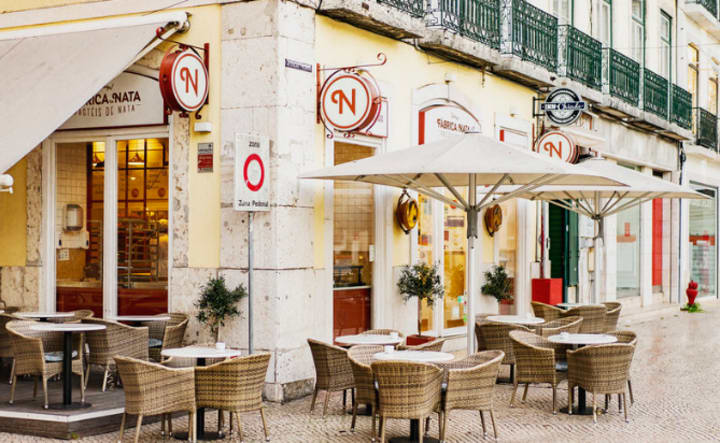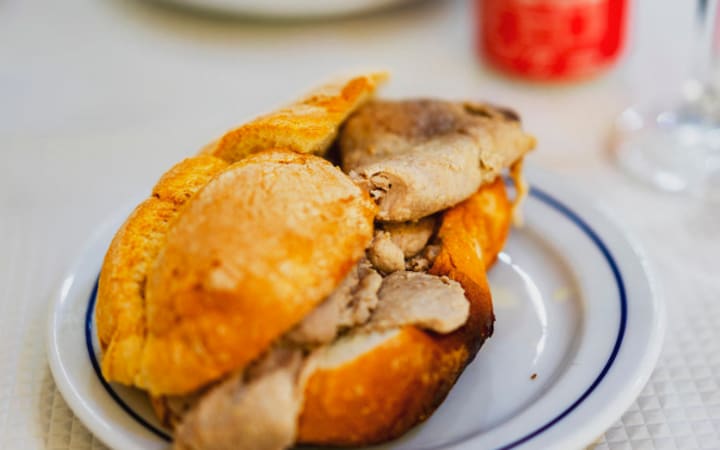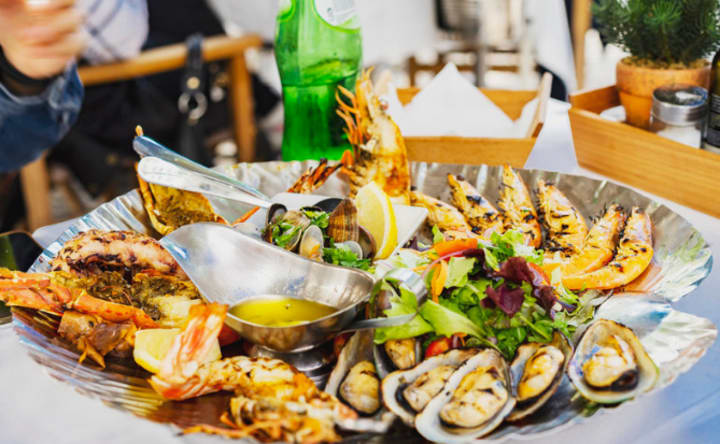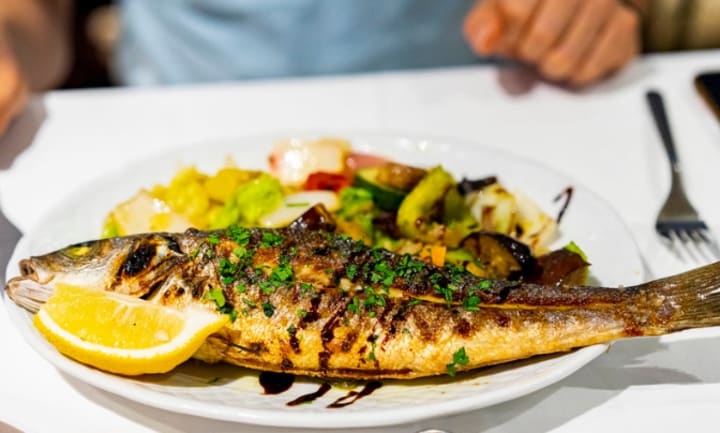
I have always felt that Portugal is a country that does not have a strong sense of existence.
Despite being the first "global empire" to embark on the development of air routes and colonial expansion, Portugal has left behind a short-lived splendor. However, the rapid decline after that, coupled with the location of the "ends of the earth" and the contemporary economy that has never been very good, even though I have lived in Europe for few years, except for the mention of the "financial crisis", I rarely think of Portugal as a country.
But I didn't expect that what attracted me to this country turned out to be a group of food photos on the official account of the Portuguese National Tourism Administration. So my Portuguese story also begins with food.
Local's Favorite Egg Tarts: FÁBRICA da NATA
Before going to Portugal, I was recommended this tart workshop FÁBRICA da NATA by a colleague who is well-versed in the field of food travel. He said that the landlord recommended it to him back then, because it was so delicious that he went there several times, so that he did not make time to go to Belém. There is a FÁBRICA da NATA just opposite the Rossio train station next to the hotel, so the authentic Portuguese egg tarts start from it.
This egg tart workshop has a white signboard, a white sunshade, and two large egg tarts hang at the door as a signboard. Compared to the more famous Belém, FÁBRICA da NATA is small and fresh in its decor and taste.
The chefs are busy filling the counter with trays of egg tarts ready to open the door to welcome customers. One of the selling points of FÁBRICA da NATA is to watch the chefs make the egg tarts. The chef's hat is decorated with blue and white patterned lace, and the Portuguese like to decorate their proud tile patterns to various corners.
Compared with other egg tarts in Lisbon, FÁBRICA da NATA's tart skin is more crispy, and the tart core is not too sweet. When you bite into it, the milky fragrance bursts in your mouth. I can't help but add cinnamon, which is very friendly to people like me who don't like cinnamon.

The originator of Portuguese egg tarts: Pastéisde de Belém
In fact, when it comes to egg tarts, it is generally believed that it has two origins in England and Portugal (the difference is in the different tart skins). But no matter what kind of egg tart, it is said that the "ancestor" is a French dessert called pastry. The English egg tart (called "Custard tart") has been around since 1399 at the coronation banquet of Henry IV. The Portuguese version of the egg tarts comes from the 13th-century Jeronimos Monastery in Lisbon. It is said that monks from France at that time brought the French pastry practice. It happened that the monastery used the unusable laundry to use the egg yolks left over from the egg whites, so the monastery kitchen improved the French recipe and invented the Portuguese version of egg tarts.

But the egg tart recipe from the monastery kitchen has been passed around in the monastery for centuries in obscurity. It was not until after the Liberal Revolution in 1820 that the struggling monastery had to start selling egg tarts to earn extra money, and this delicious dessert became popular in Lisbon. When the monastery closed in 1834, the recipe was sold to a nearby sugar factory, and three years later the owner of the sugar factory founded the Fábrica de Pastéis de Belém, the Belém egg tart that is still booming. Therefore, Belém's egg tarts can be said to be the originator of Portuguese egg tarts.
The gloomy, unpleasant weather that day made a need for sweet comfort. The blue and white signs on the side of the road are not very conspicuous, and not far away is the Jeronimos Monastery, where egg tarts were invented 8 centuries ago. Because of the early hours, there are still many empty seats in the store that is said to be crowded with people all year round. It doesn't look like a huge front door, but it's actually quite different inside. The blue and white tile decoration looks very traditional. Arranged in a small two-person seat, surrounded by guests that sounded mostly American, it looks like Belém tarts have a place in American travel guidebooks too.
Belén's tart skin is softer, but as a sideline of the sugar factory owner, the tart core obviously adds too much sugar. One bite, the sweetness exploded in the mouth, mixed with a strong cinnamon flavor. It's not quite as sweet as the British disaster Christmas apple pie, but it's still too sweet for non-sweet aficionados. However, the egg tarts of the Ronimos Monastery are the originator of the Portuguese egg tarts after all. You can’t say that you have eaten Portuguese egg tarts without trying the “original taste” of the Portuguese egg tarts.
Pork Chop Bun: Beira Gare
When I went to this Beira Gare, I didn't know it was an internet celebrity, but every time I passed by, I was a little curious why there were always so many people? So on the last day in Lisbon, I finally couldn't hold back my curiosity and walked in.
This is a small shop in front of the Rossio train station, and the seats in the shop are so crowded that it is a bit difficult to walk around. Many customers without seats simply stood in front of the bar and feasted. Like a real fast food restaurant, the dishes are painted on the light box sign behind the bar. The diners around the counter occasionally chat with the clerk and then laugh together. It is said that those who eat at the counter are the real Lisbon local customers.

Portuguese pork chop buns are called bifana, and the seemingly tasteless pork chops are thinly fried and sandwiched in a Portuguese bread called papo seco. Lisbon's pork chop buns don't coat the pork chop with flour, so the bread soaks up the pork chop's juices. As soon as I took a bite, I realized that the seemingly tasteless pieces of pork were actually fried just right, neither too dry nor too greasy. The aroma of the heated fat exploded in the mouth, filling the body with the satisfaction of calories. In addition to bifana, seafood bubble rice is also a popular item at Beira Gare. However, the pork chop buns of 2.5 euros are obviously more cost-effective.
I only ordered a pork chop bun, and asked for coke and local beer. I was so full that I couldn't even drink Coke. Fortunately, I only discovered bifana in the last hour before leaving Lisbon, otherwise it would be too painful to choose between deliciousness and body every day.
Seafood Pao Rice: Uma
Although I often don’t trust the famous restaurants recommended on the forum, this Uma’s seafood bubble rice is too much to my liking, so I made an exception to be added to the list.
The nine-square block below the Santa Justa lift is a restaurant-heavy area, many of which are occupied by open-air seating in small restaurants. Grandpa's seafood soup Uma is hidden in this block. I followed the map to find the neighborhood, and before I could confirm the house number, the old grandfather greeted me from the door: "Seafood rice, do you want seafood rice?"

The two bosses will cook the food for the guests themselves, and the seafood soup is the only recommended dish for Uma. The grandfather who greeted us just now kept switching his identities between ordering dishes with a small book and a cauldron in the front kitchen. When there are guests seated, he always suggests in a loud voice: "Seafood rice, we only sell seafood rice."
Seafood Pao Rice is like a soup version of Paella Paella. Compared with deliberately raw paella, the soft seafood Paella seems to be more in line with Asian tastes. As a half-baked cook who can make delicious Paella, I was very satisfied with the strong taste of saffron in the paella.
Love at first sight in the small square of the monastery: Mar ao Carmo
In fact, this little restaurant called Mar ao Carmo was not on our list. After watching the sunset in the Santa Justa elevator, strolling out, I came across the Carmo Square in front of the Carmo Monastery. Around the small square, there are open-air seats of small restaurants. In the evening, candles were lit one after another on the dining table. Next to the small fountain in the middle of the square, a little brother with curly hair played the violin intoxicated, and the sound of the piano filled this small square with candlelight.

Passing by this Mar ao Carmo, the waiter just brought a large grilled seafood platter to a table of American couples. I regretted that I had already eaten dinner, so I rushed back from the Belém district at noon the next day, just to have lunch in Carmo Square.
The Carmo Square in the sun has faded from the warmth and romance of the night, and has become clean and bright. The white tablecloth of the restaurant's open-air seating is matched with the cute little green plants on the table and the olive oil bottle on the wooden tray, creating a very fresh picture of southern Europe.
The food was of course the seafood platter I saw the night before. Added a glass of sparkling wine to Mr. Moon Ban, which radiates an alluring golden glow in the midsummer sun in southern Europe. The food isn't strictly a surprise, but simple seafood dishes are delicious as long as the ingredients are fresh. And with such lovely sunshine and little squares, what more could I ask for.
Uptown's Residents' Cafe: Momento HB
While I love Largo do Carmo, I can't deny that a grand seafood feast like Mar ao Carmo is for tourists. A real Lisbon little restaurant tucked away in the alleys of Lisbon, Momento HB is just such a "Lisbon Seafood Stir-Fry".
After watching the sunset at the Miradouro da Senhora do Monte, the observation deck of Our Lady of the Mountain, the sky has become a little dark. First, I went to an online celebrity seafood restaurant on the list. As soon as I arrived at the door, I was scared off by the number pick-up machine in more than a dozen languages and dozens of waiting tourists, so I found this restaurant near the hotel on TripAdvisor and it has a good ranking and can be online. Booked seafood restaurant. After booking a seat, I called Uber, and after a long turn along the uphill and downhill roads in Lisbon, I finally found an alley so narrow that only one or two mini cars could pass through the upper city. The driver said, "We are here!"

The small restaurant Momento HB is hidden behind a large yellow wooden door with a very old half-dome, which I have always loved. The space behind the big wooden door, as crowded as such a small restaurant should be, was greeted by the owner, who passed through the gap between the backs of the chairs and sat down at a reserved table by the wall.
The menu is in Portuguese, and I looked at the surrounding tables, checked the dictionary and ordered two starters and two main courses. The seafood pao rice without saffron tastes more intimate, the clams grilled on the iron plate are fresh and juicy, the especially fresh sea bass is served with warm grilled vegetables, and the fried calamari is served with Arabic style rice. Small plates that are not too grand, dishes that are not too eye-catching, and a comfortable everyday feeling. I also love this little crowded restaurant.
All in all, this Lisbon food trip brought me a lot of surprises. I think when we travel to a place, experiencing the local food is the best way to understand the local culture.
About the Creator
Sinovita
This is Sinovita! I have been freelance writing for more than 10 years. I love traveling and writing. I feel writing is a natural record of true feelings after serious life, and life is always a better script than a movie.






Comments
There are no comments for this story
Be the first to respond and start the conversation.